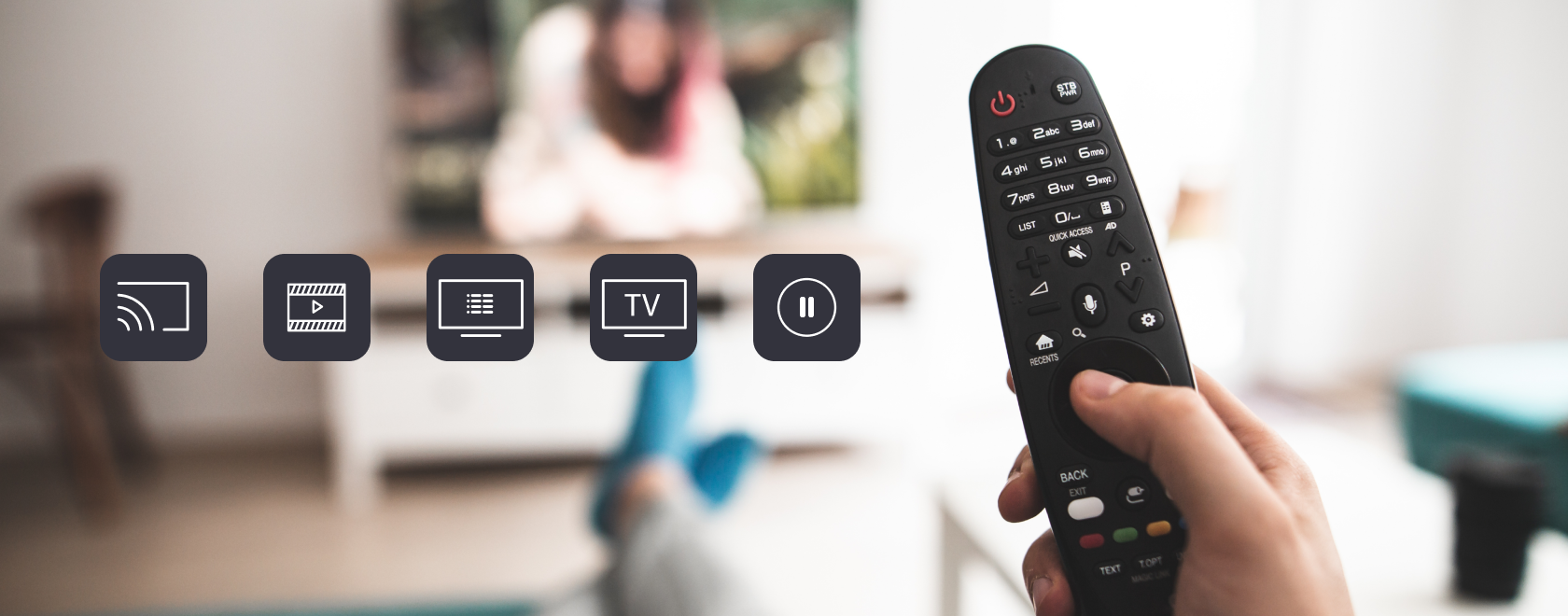Modern IPTV systems offer enhanced viewer participation, replacing traditional television with a feature-rich multimedia platform.
IPTV (Internet Protocol Television) uses Internet protocols to broadcast television programs and video: content is streamed over networks, greatly expanding the range of interactive possibilities. Using interactive content options, subscribers can watch not only TV channels, but also interact with the content, manage and customize viewing according to their preferences, and receive additional services.
Key interactive IPTV features
- Broadcasting traditional channels. With IPTV, users can watch TV channels through the Internet. With this option, the picture quality is usually superior to cable TV due to the support of HD and 4K formats (to watch content in this quality, the user needs to connect the appropriate equipment: a smart TV or TV set-top box).
- Video on Demand (VoD). The ability to watch video on demand is one of the main advantages of IPTV. Users have a choice of movies, series, and programs available to them at any time. Typically, VoD catalogs contain thousands of titles, offering content for every taste.
- Electronic Program Guide (EPG). This is a user-friendly interface for viewing channel schedules and searching for programs. EPG helps you easily navigate through the programs that are currently being broadcast, recently ended, or about to be broadcast in the near future.
- Pause, timeshift, and rewind. In modern IPTV-systems viewers can pause playback, rewind content, and even start watching a program from the beginning if it’s already on (timeshift function). These features are especially useful when the user needs to pause during a live program or review key moments.
- Viewing content from a smartphone on a big screen. IPTV allows users to send media from their mobile devices to the big screen TV in a couple of clicks. This is convenient when a user starts watching content on a smartphone or tablet, perhaps when leaving work for example, and then continues watching on TV when they arrive home. Photos or personal videos saved on a smartphone can also be sent to the big screen.
- Social media integration. Modern IPTV systems often provide users with access to social media, allowing them to immediately share viewing impressions, participate in program discussions, and even see what friends are watching. This creates more social and interactive experiences.
- Advanced content information. Users of some IPTV services can learn additional details about the movie, director, actors, and other film participants, as well as read the contents of episodes or show seasons. This makes watching more informative and entertaining, allows you to quickly refresh your memory about the events of previous episodes, and ‘tune in’ to the new episode.
- Additional services. IPTV also offers access to various additional services, such as weather forecasts, latest news, and even online games that can be played on the big screen.
All of these user engagement tools transform the TV into a convenient and multifunctional entertainment and information hub.
Where IPTV is used
IPTV services are offered by carriers, Internet service providers, cable companies, hotels, and restaurants. For example, hotels can offer IPTV to guests as part of a service package, providing access to a variety of content and features. IPTV is also widely used in corporate environments, such as for broadcasting educational content.
Internet TV offers users advanced functionality: modern IPTV systems are far superior to traditional television. These interactive elements enable increased user engagement in content selection and viewing management, provide access to various services, and make the viewing process more exciting and personalized.
With the development of technology, IPTV keeps offering users more and more capabilities for quality and convenient viewing.
